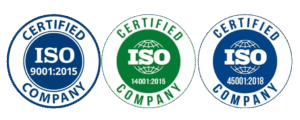Reforming packaging regulation is on the horizon in Australia, and for supply chain managers the implications go well beyond packaging selection—they touch procurement, logistics, reverse flows, materials, data, risk and cost. The Department of Climate Change, Energy, the Environment and Water (DCCEEW) states the goal is that “all packaging available in Australia is designed to be recovered, reused, recycled and re-processed safely”. DCCEEW
For professionals managing the end-to-end supply chain (procurement, warehousing, transport, packaging flow, returns), this reform signals a shift—packaging is becoming a strategic asset, not just a functional cost.
Why supply chain managers need to care
Here are some of the core reasons:
- Design matters at the logistics stage. Packaging that’s designed for recovery or reuse will affect how it is handled, stored, transported and returned.
- Lifecycle costs change. Packaging which cannot be efficiently reused or recovered may incur higher disposal costs or retrofit costs.
- Data and traceability will gain focus. The reform consultation indicates support for stronger tracking of packaging placed on market, recycled content, materials and end-of-life pathways. DCCEEW+1
- Risk of non-compliance or stranded assets. Packaging formats selected now may become non-compliant under future rules (e.g., minimum recycled content, bans on certain materials). Supply chains that lock in inefficient formats face higher costs.
- Opportunity for supply chain efficiency and differentiation. Those ahead of the curve can optimise packaging, streamline logistics, reduce waste, and offer clients or internal stakeholders a better value proposition.
Key reforms supply chain managers should watch
From what is publicly available, these are among the major reform elements:
- A review of the co-regulatory model and direction toward possibly mandatory national standards or an extended producer responsibility (EPR) scheme. Food Packaging Forum+2DCCEEW+2
- Emphasis on design for recyclability, removal of problematic materials (e.g., certain additives), and increasing recycled content. DCCEEW+1
- The introduction of the “Design for Kerbside Recyclability Grading Framework” (which grades packaging for how it will perform through collection, sorting and recycling systems) – while still voluntary, it signals direction. Parliament of Australia+1
- Stronger national consistency across states/territories for packaging standards, labeling and recovery. DCCEEW
How supply chain operations might need to evolve
Here are practical areas where supply chain managers will need to adapt:
1. Packaging specification and procurement
- Review packaging formats (primary, secondary, tertiary) not just for product protection, but for recovery and reuse.
- Work with packaging suppliers to assess materials (mono-materials, recyclability, recycled content) and design choices (ease of separation, minimal composite materials).
- Procurement criteria may need to incorporate these sustainability/recovery metrics.
2. Logistics, warehousing and reverse flows
- Storage/handling systems may need redesign if packaging becomes reusable or returns become viable.
- Reverse logistics (packaging returns, reuse cycles) may become part of the standard flow rather than exception.
- Transport planning should factor in packaging lifecycle (load optimisation, stacking, handling of reusable crates/containers).
3. Data systems and reporting
- Capture data about packaging volumes, material types, recycled content, recovery rates, lifespan of reusable packaging formats.
- Prepare for systems that track lifecycle of packaging assets (how many times reused, when recycled, end-of-life flows).
- Reporting may become increasingly important (for companies subject to future regulatory obligations).
4. Supplier and partner alignment
- Ensure suppliers, contract packers, 3PL partners are aware of packaging reforms and can meet evolving requirements.
- Work with logistics partners to develop return or reuse programmes, where packaging is part of a circular loop.
- Communication across the chain becomes critical—packaging design, supply, logistics and recovery all interlink.
5. Risk assessment and scenario planning
- Build scenarios: What if regulations introduce minimum recycled content, or ban certain materials? What is the cost/impact to your supply chain?
- Identify packaging formats that have high redesign risk or high cost if non-compliant.
- Develop mitigation plans: alternative packaging materials, modular designs, increased reuse.
What supply chain managers can do now
Here’s a pragmatic roadmap you can act on today:
- Audit packaging formats and supply chain flows
- List all packaging used (by product line, by packaging tier) and map end-of-life outcomes (reuse, recycle, landfill).
- Identify high-risk formats (complex materials, mixed polymers, low recycled content, low returnable usage).
- Engage packaging and logistics partners
- Ask for material/disclosure from packaging suppliers (recyclability, recycled content, lifecycle plan).
- Talk with logistics/3PL providers about return flows, reuse, packaging asset management.
- Collaborate to test more reusable or recyclable formats, pilot packaging reuse in your operations.
- Review procurement and design criteria
- Update specification guidelines to include recyclability, reuse potential, recoverability, lifecycle cost.
- Incorporate sustainability metrics (e.g., % recycled content, number of reuse cycles) into vendor selection.
- Prepare your data and systems
- Implement tracking systems for packaging formats, usage, lifecycle, return flows, recovery.
- Standardise reporting templates so you can capture data consistently across suppliers and operations.
- Educate your team and stakeholders
- Ensure procurement, packaging engineers, logistics/warehouse operations are aware of upcoming changes, risks and opportunities.
- Communicate to leadership/board the strategic value of aligning now: reduced future cost, risk mitigation, supply-chain resilience.
- Monitor regulation and industry developments
- Track updates from DCCEEW, industry bodies such as Australian Packaging Covenant Organisation (APCO), packaging industry groups.
- Attend webinars, engage in consultation if possible, stay ahead of timelines.
Key benefits of taking early action
By being proactive, supply chain managers and organisations can gain:
- Reduced risk of costly packaging redesigns, supply-chain disruption or compliance-related impacts.
- Improved packaging efficiency, fewer material changes, better logistics flow (thanks to reusable packaging design).
- Stronger alignment with client and regulatory expectations around sustainability and circular economy.
- Competitive advantage: being able to say “we have supply chains ready for packaging regulation reform” adds credibility.
- Long-term cost savings and resource optimisation: reuse, better materials, smarter flows.
Final thoughts
Reforming packaging regulation is not simply a matter for packaging designers or brand owners—it has deep implications for supply chain managers. The way packaging is procured, handled, transported, returned and recovered is shifting. Supply chains that recognise packaging as more than transit material—seeing it as a circular asset—will be better placed.
Start the work now: review your packaging formats, adjust procurement and logistics criteria, build return or reuse flows, capture data, and partner with suppliers and logistics providers who understand the transition.
If you’d like, I can help you draft a Supply Chain Manager’s Checklist for Packaging Reform Readiness—with key tasks, timelines and metrics you can use within your organisation.









